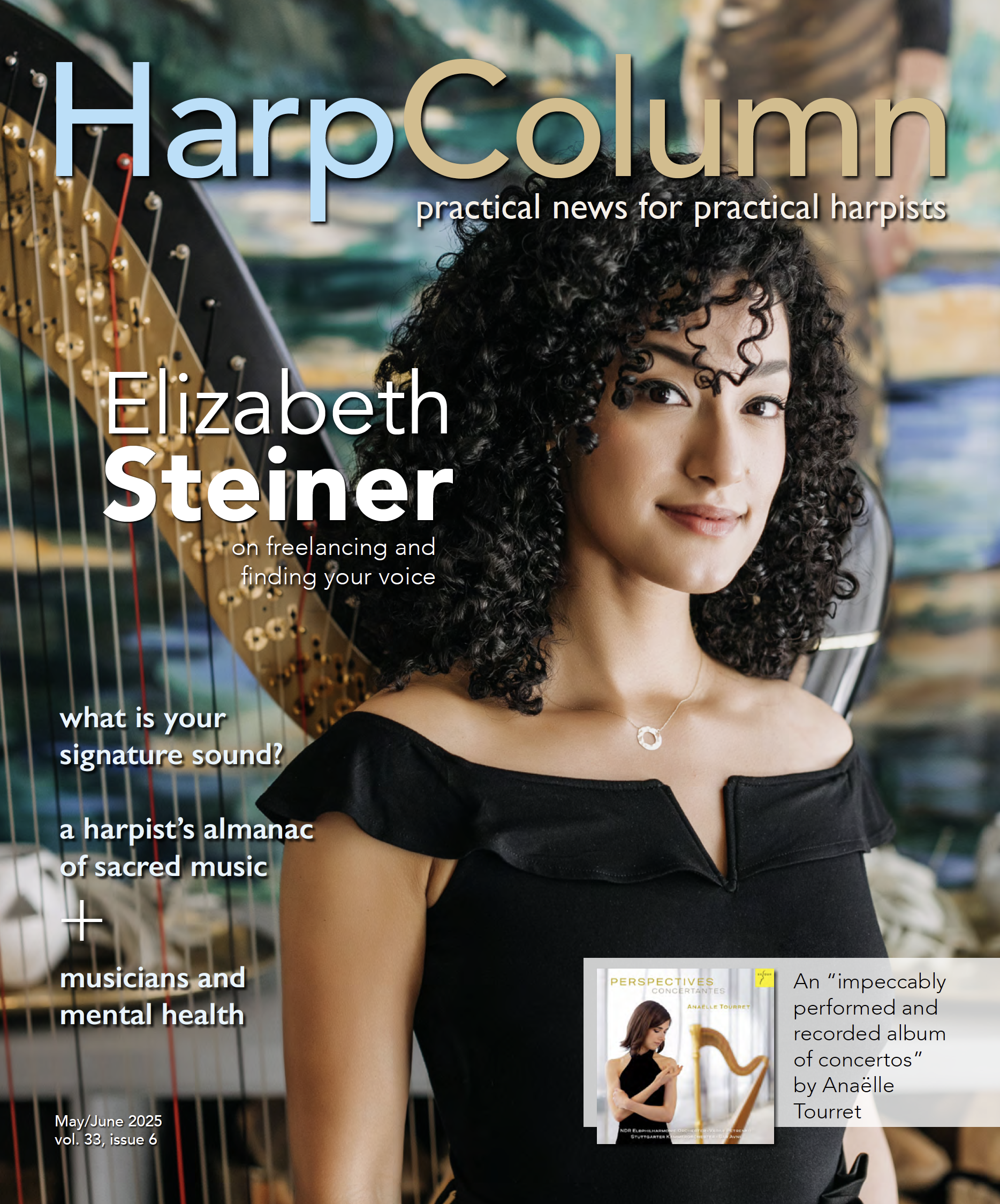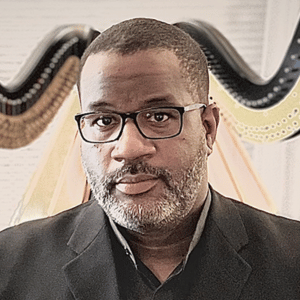
Download this issue to get this tune now!
Each installment of our Tear-Out Tunes series features a new piece written by one of the best harpist-composer-arrangers in the business. Each composer will tell you a little bit about their piece, and also give you some helpful tips for learning it and getting the most out of the experience.
The new piece (on the following pages) is yours to keep. We even put it right in the middle of the magazine so you can tear out these four pages and put your new tune on your music stand.
Have you ever wondered what inspired a composer to write the piece you were studying? For the aspiring performer, knowing the inspiration behind a piece can certainly aid in the interpretation of the work. The harp canon includes pieces that were inspired by poetry and paintings alike. Composers often based their compositions on people, places, and things to evoke certain imagery within each musical phrase. Short stories provided a narrative for composers to draw their inspiration from. Both André Caplet’s Conte Fantastique inspired by the short story The Masque of the Red Death by Edgar Allen Poe and Légende by Henriette Renié based on the poem Les Elfes are prime examples of compositions inspired by literary works. Carlos Salzedo and Marcel Grandjany composed a collection of short pieces based on vivid and playful imagery in their Short Stories in Music for Young Harpists and Little Harp Book respectively. These are only a few of the pieces for varying skill levels that draw inspiration from both the literary and visual arts.
The inspiration of a piece of art can provide infinite possibilities for composing music that is enthusing for the learner and engaging for the listener.
One of my first encounters with this compositional practice of drawing inspiration from poetry was during my study of Paul Hindemith’s Sonate für Harfe. The poetic inspiration for the third movement was Ludwig Heinrich Christoph Hölty’s poem titled “Auftrag.” Hindemith’s use of sumptuous chords, supple harmonics, and subtle dynamics creates an idyllic musical setting of the poem. Another piece from my early exploration of the harp repertoire was Carlos Salzedo’s Chanson dans la Nuit. While the piece is not derived from a literary or visual work, Salzedo creates a narrative based on the innovative harp effects cataloged in his L’Etude Moderne de la Harpe. These effects are featured throughout the piece in an episodic nature demonstrating both the symphonic and storytelling capabilities of the harp.
For my compositional contribution to this series, I drew my inspiration from Hindemith’s use of a poem and Salzedo’s inclusion of harp effects. Finding inspiration from literary and visual works of art is something I utilize often when composing. The inspiration of a piece of art can provide infinite possibilities for composing music that is enthusing for the learner and engaging for the listener. Programmatic music cultivates this connection between composer, artist, and listener through the use of program notes and evocative titles. The poem “Swinging” by Lucy Clifford (also known as Mrs. W.K. Clifford) is the source of my composition’s inspiration. Lucy Clifford was an English novelist, journalist, and playwright whose short stories and plays were adapted for cinematic presentations in the early 1900s. “Swinging” is a poem from her collection of short stories and poems titled Very Short Stories and Verses for Children (1886).
I.
Swing, swing, swing,
Through the drowsy afternoon;
Swing, swing, swing,
Up I go to meet the moon.
Swing, swing, swing,
I can see as I go high
Far along the crimson sky;
I can see as I come down
The tops of houses in the town;
High and low,
Fast and slow,
Swing, swing, swing.
II.
Swing, swing, swing,
See! the sun is gone away;
Swing, swing, swing,
Gone to make a bright new day.
Swing, swing, swing.
I can see as up I go
The poplars waving to and fro,
I can see as I come down
The lights are twinkling in the town,
High and low,
Fast and slow,
Swing, swing, swing.
The poem provided me with a great deal of inspiration for depicting the rustic elements in the text similar to Hindemith’s musical depiction of Hölty’s “Auftrag.” While the title of the piece refers to the childhood pastime of swinging on an actual swing, I felt it would be fun to incorporate the musical genre that is associated with swinging. To capture the motion of the reoccurring phrase “Swing, swing, swing,” I decided to create a “swinging” motif with a dotted rhythmic pattern in the bass and the ii–V–I progression commonly used in jazz. This motif evolves with each recurrence throughout the piece. Scales and arpeggios are employed to provide a literal depiction of the ascending and descending movement in the text. The piece also includes traditional harp effects with glissandi, harmonics (produced where written), and playing near the sound board (pdlt or près de la table). The harmonic structure of the piece generally alternates between major seventh and ninth chords, along with pentatonic scalic figures. My compositional approach to this piece is derived from Salzedo’s episodic structure in Chanson dans la Nuit. I chose to use each verse as a musical phrase to create a narrative that captures the essence of the text. The ability of the harp to convey mood through dynamics, harmony, and effects aids in my intent to transport the performer and listener to a jovial place of play. •








